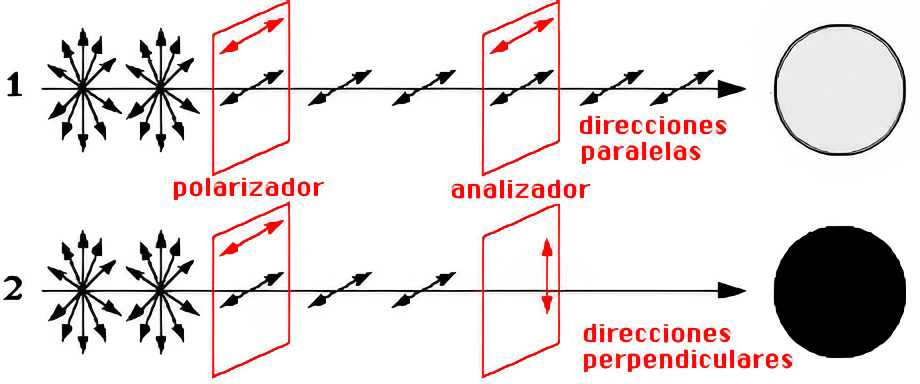
Interference colour. How is it formed?
1polariser + analyser (without mineral)
What happens when polarised light arrives at the analyser?
We have already seen that when light passes through the polariser, it then vibrates in only one plane, normally in the east-west direction.
When the polarised light arrives at the analyser, what happens will depend on the position of the direction of vibration of the analyser.
If we situate the analyser in such a way that it has the same direction of vibration as the polariser (1), the light will pass through it without any problem. However, as stated above, in mineralogy, the working position of the analyser is with its direction of vibration perpendicular to that of the polariser (crossed-polars = XPL). In these circumstances, the light will not pass through and the field will be seen as black (2).

What will happen if a crystal is interposed?
Index | Introduction | PPL | XPL ortos | Interf colour | Int. c. formed? | Previous | Next